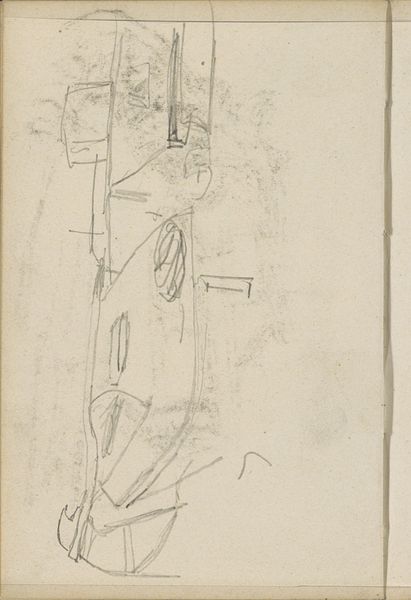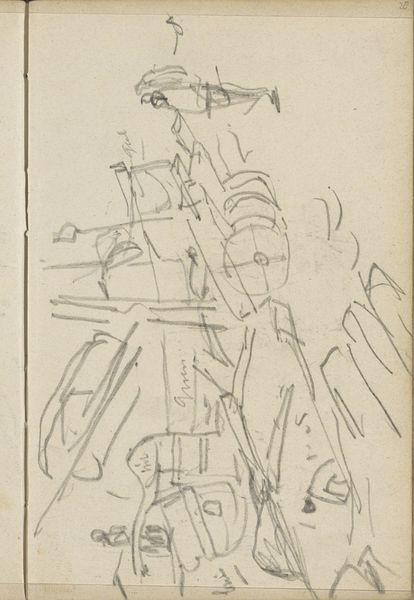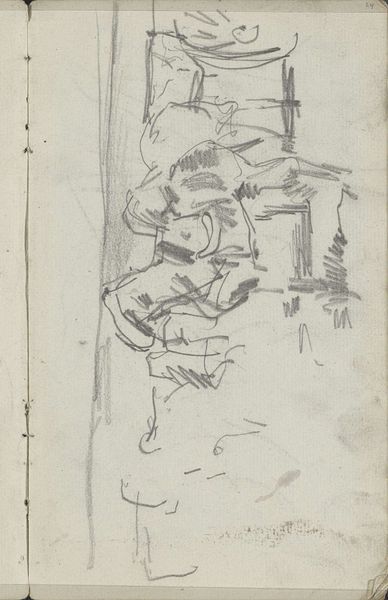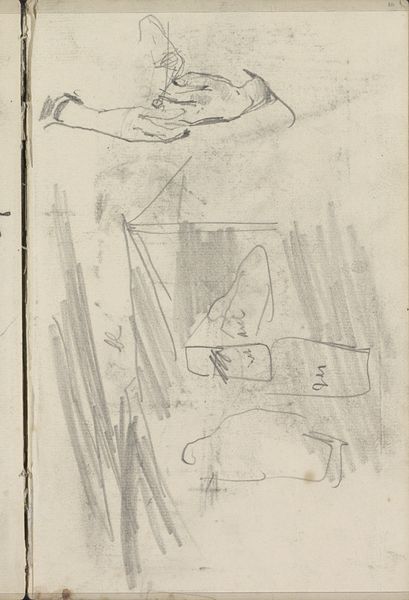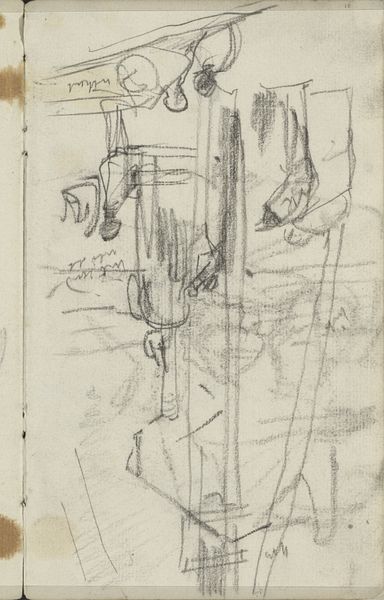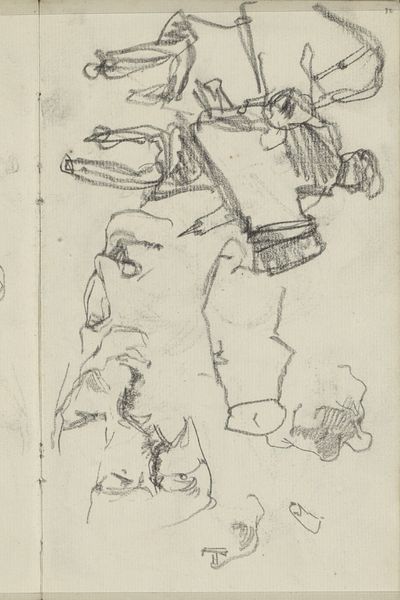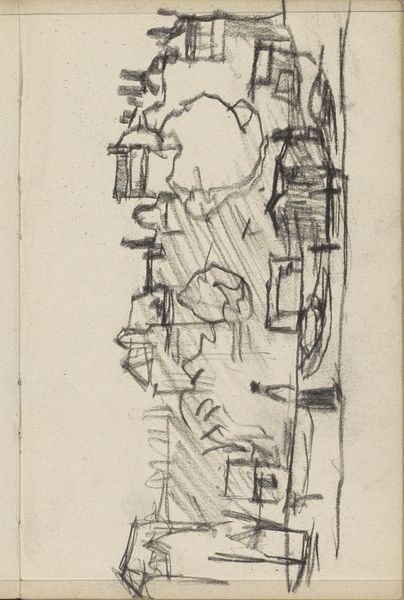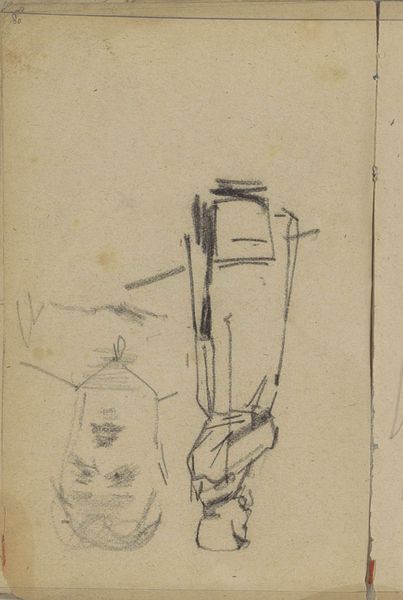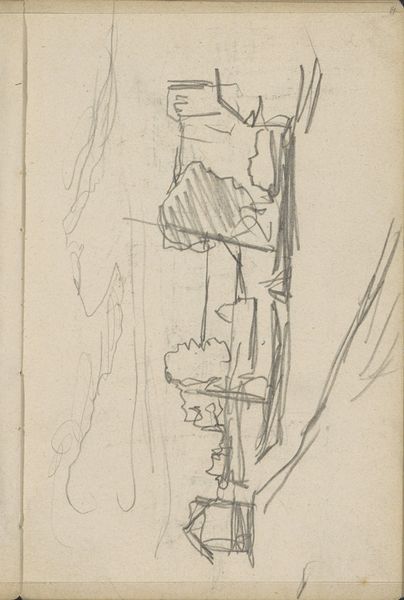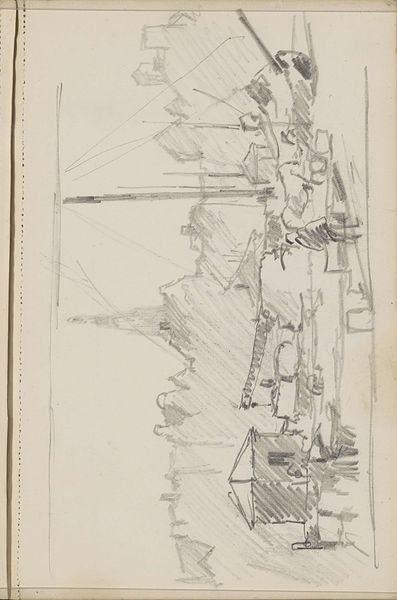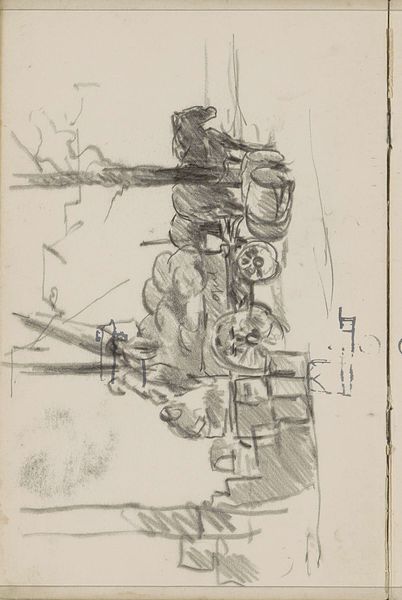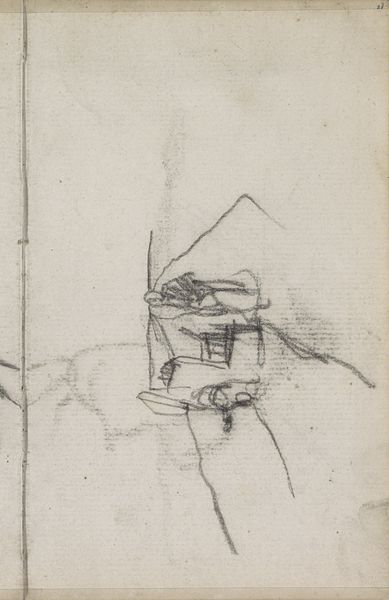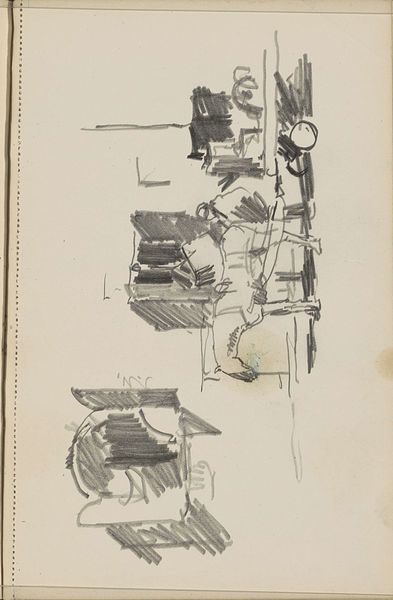
drawing, ink, pencil
#
drawing
#
pen sketch
#
landscape
#
figuration
#
ink
#
pencil
#
horse
#
cityscape
#
post-impressionism
Copyright: Rijks Museum: Open Domain
Curator: We are looking at Willem Witsen's "Rijtuigen," created between 1888 and 1890. It's a pen and pencil drawing now housed at the Rijksmuseum. What's your immediate take? Editor: Chaos. An energetic burst of lines creating…what is that, really? The hurried quality suggests capturing a fleeting moment. The light and shadow seem almost haphazard. Curator: Indeed, but there's method in what some might see as madness. Witsen was deeply embedded in Amsterdam's artistic and social circles. This work captures the bustling city life, revealing how rapid industrialization impacted societal infrastructure. The carriages, likely symbols of both wealth and dependence, appear enmeshed in the burgeoning city space. Editor: I notice how Witsen’s use of line varies; some strokes are assertive, others feathery and indistinct, which, materially, contributes to a dynamic sense of urban movement. The use of hatching defines the volumes, suggesting weight and the contrast adds a lot to the sense of liveliness. Curator: Consider the historical context. The late 19th century saw immense social stratification, impacting labour rights, and challenging conventional norms in ways echoed in the composition’s disjointed yet frenetic nature. Editor: Yet the formal elements, like the deliberate lack of a central focal point, suggests to me a rejection of traditional composition, emphasizing an attempt to record all details that compose a specific instance. Curator: Right. His work frequently addresses the socio-political upheavals, seen particularly in how different classes would've experienced those carriages—comfort versus utility and work. Witsen brings class differences into visibility by showing them as subjects to document. Editor: And the rough texture becomes integral. The energy almost vibrates off the page. A snapshot that embodies an experience instead of an idyllic, still tableau. It is as if the artwork strives to exist, to make present that which is recorded from reality. Curator: So, while the artwork itself may seem a simple sketch, it allows us to consider the era’s complex social dynamics—the rapid development and the stark inequality interwoven in the very fabric of urban expansion. Editor: Absolutely, the semiotic readings from just the stylistic arrangement of lines bring you much closer to an understanding than I anticipated at first look. Curator: It’s a valuable glimpse into a past where new and oppressive orders are being actively constructed in urban environments. Editor: Agreed; it compels me to pause and consider beyond surface appearances, even in what initially seems like a cursory sketch.
Comments
No comments
Be the first to comment and join the conversation on the ultimate creative platform.

